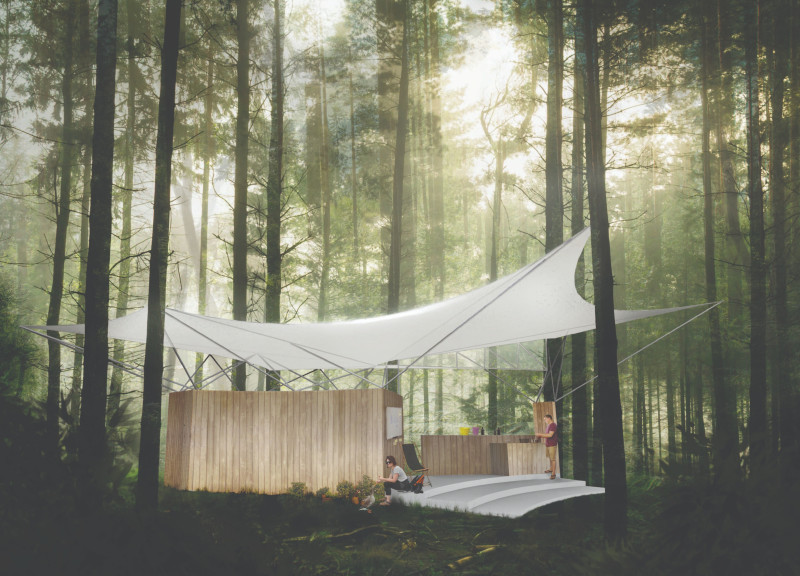5 key facts about this project
Canomes is an architectural solution designed for rainforest environments, aimed specifically at biologists conducting research. The microhome focuses on ecological sustainability, fitting naturally into the landscape while minimizing its environmental impact. Located in the Congo Forest, the design responds to the area's hot and humid climate with regular rainfall, which plays a significant role in how the structure functions.
Design Concept
The concept behind Canomes centers on a compact living space measuring 25m². The footprint is derived from the negative space of the rainforest canopy, ensuring that the microhome does not disturb the trees surrounding it. This careful planning allows the structure to coexist with the existing ecosystem without requiring any clearing. The open layout offers wide views of the landscape, enhancing the experience for residents.
Canopy and Water Management
A key feature of the microhome is its generous canopy. This element provides protection from the weather and functions as a rainwater collection system. The design channels rainwater toward a central collection point, allowing for effective management of this vital resource. The ability to collect, filter, and use rainwater highlights the project's focus on sustainability and resource efficiency.
Waste Management System
Waste management is addressed through a compost toilet system. Within this design, biological waste is processed in a contained bio-drum, which facilitates composting for use in the surrounding area. This approach not only reduces the environmental footprint of the microhome but also showcases a commitment to sustainable living. The system supports the health of the local ecosystem while allowing residents to engage with the natural environment.
Spatial Engagement
The layout of Canomes is carefully designed to encourage interaction with the vibrant forest ecosystem. Large openings connect the microhome to the landscape, allowing biologists to observe their surroundings closely. This connection is fundamental for those using the microhome, as it promotes both scientific research and a deeper appreciation for the nature that surrounds them. The canopy’s design is not only practical for collecting rainwater; its shape also reflects the flowing forms found in the rainforest.






















































